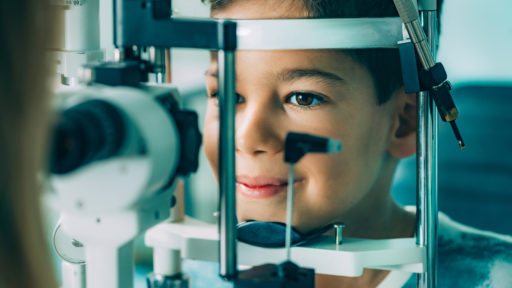Ptosis (pronounced “toe-sis”) is the medical term for drooping of the upper eyelid(s). This lowering of the upper eyelid margin may cause a reduction in the field of vision when the eyelid either partially or completely obstructs the pupil. Patients with ptosis often have20difficulty keeping their eyelids open. To compensate, they will often arch their eyebrows in an effort to raise the drooping eyelids. In severe cases, people with ptosis may need to lift their eyelids with their fingers in order to see. Children with ptosis may develop amblyopia (“lazy eye”) or developmental delay from limitation of their vision.
What Causes Ptosis?
There are many causes of ptosis including age related weakening of the muscle, congenital weakness, trauma, or sometimes neurologic disease. As we age, the tendon that attaches the levator muscle, the major muscle that lifts the eyelid can stretch and cause the eyelid to fall. This represents the most common cause of a droopy eyelid. Ptosis may also occur following routine lasik or cataract surgery due to stretching of the muscle or tendon. Children may be born with ptosis or may acquire it due to trauma or neurologic reasons.
Can Ptosis Be Corrected?
Ptosis can be corrected surgically and usually involves tightening the levator muscle to elevate the eyelid. In severe ptosis, when the levator muscle is extremely weak, a “sling” operation may be performed, enabling the forehead muscles to elevate the eyelid(s). Other types of repair may include surgery on the muscle on the inside of the lid in cases of small amounts of ptosis. The surgeon will perform testing determine the best form of correction for the individual patient. The goal is to elevate the eyelid to permit a ful l field of vision and to achieve symmetry with the opposite upper eyelid.
Who Should Perform Ptosis Surgery?
When choosing a surgeon to perform ptosis surgery, look for a cosmetic and reconstructive facial surgeon who specializes in the eyelids, orbit, and tear drain system. Your surgeon’s membership in the American Society of Ophthalmic Plastic and Reconstructive Surgery (ASOPRS) indicates he or she is not only a board certified ophthalmologist who knows the anatomy and structure of the eyelids and orbit, but also has had extensive training in ophthalmic plastic reconstructive and cosmetic surgery.

